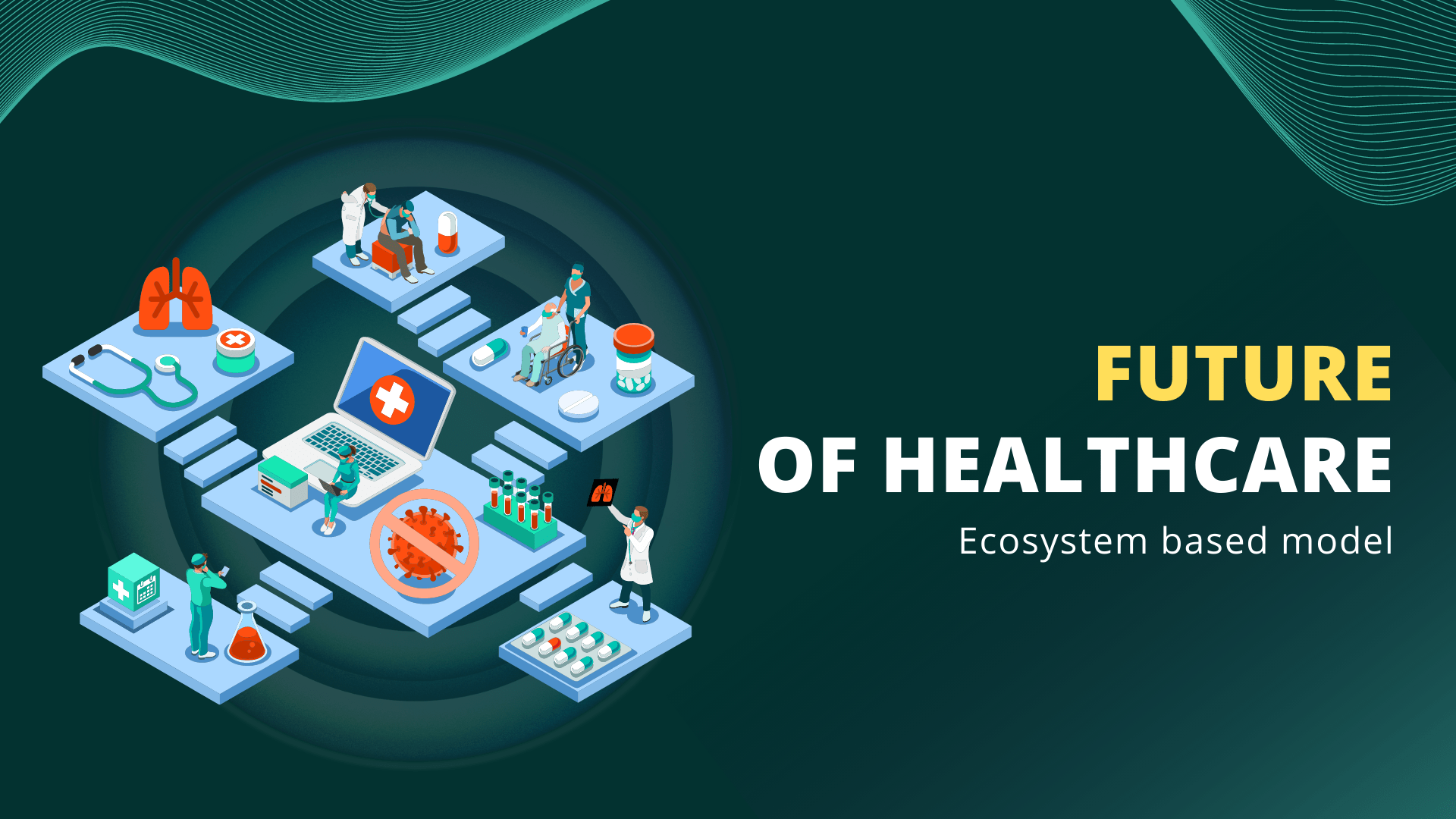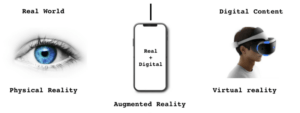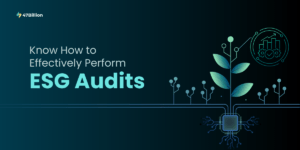What is Industry 4.0?
Industry 4.0 is the fourth industrial revolution! It is helping automate businesses and making processes more efficient.
The third industrial revolution was focused on switching mechanical and analog processes to digital ones. The fourth focuses on the impact of digital technologies by making machines self-sufficient and capable of human-machine interaction.
Industry 4.0 represents a foundational shift in business operations.
Here are the various advantages of digital technologies –
- Increased automation
- Predictive maintenance
- Self-optimization of process improvements
- Increased customer efficiency and responsiveness
Technology companies capture nearly half of the venture capital and forecast output growth at 135%.
-Forbes
Cloud computing, machine learning, AI, and big data are categorized as the sub-sections of digital technologies. They are making significant ripples in the technology landscape.
Regardless of the industry, the primary reason for that industry’s expected success is how tech is transforming and will change its trajectory.
Digital Technologies and Healthcare
Digital technologies include Cloud computing, machine learning, AI, and big data. They are making significant ripples in the technology landscape.
Regardless of the industry, the primary reason for that industry’s expected success is how tech is transforming and will change its trajectory.
Today hospitals and primary care facilities are facing downturns in profitability. The health industry’s overall outlook concerns health data management, AI and IoT-based personalized health solutions, health monitoring, and genomics.
These factors are all based on the idea that your health data will drive immediate and long-term treatment options. Personalizing healthcare is guaranteed to be a gold mine in the coming years. Every industry is, in one way or another, getting powered by the gains that technology, in particular, will bring.
What is a Healthcare Ecosystem?
- It is a set of capabilities and services integrating value chain participants, including customers, suppliers, platforms, and service providers, through a central model.
- It has a virtual data backbone enabled by seamless data capture, management, and exchange.
- It helps create improved and efficient consumer and stakeholder experiences and resolves significant pain points and inefficiencies.
Technology advancements enable healthcare facilities to be available nearby or at home. It also fosters self and autonomous care and reduces friction costs between stakeholders. These shifts create an opportunity for stakeholders to move towards an ecosystem-based model of care.
Forces that drive Healthcare Industry toward an ecosystem-based model
- Influence of consumerism – Patients can now access data and seek more personalized care. They can make informed decisions based on factors like cost-efficiency, value-based care, and easy access to care.
- Transition to value-based care – As the Centers for Medicare and Medicaid services push alternative payment models in its programs, the shift could produce new sources of revenue for healthcare facilities.
- Technological Innovations – With the adoption of EHR, upcoming technologies are changing how clinicians provide care and how patients connect with the industry. For example, AI-based solutions and precision medicine genomics expand the realms of personalized care.
- Decentralized care – Remote patient monitoring and virtual care services and facilities bring care directly to the patients.
- Increased focus on welfare – Patients, payers, and providers benefit from this trend. Encouraging people to adopt healthy habits and go for wellness programs in-house reduces burnout among staff members.
Challenges addressed by a tech-based ecosystem
Concerning all the industry stakeholders, the major challenges are –
For Patients
- Inadequate access to diagnosis, therapy, and care.
- The increased cost of healthcare and insurance.
For Payers
- The growing cost of healthcare
- Fragmented patient data.
- Increased accessibility of data brings in data security risks
- Adherence to compliance standards.
For Providers
- High cost of testing and running trials.
- Less targeted programs such as female care, chronic diseases cure, etc.
- Inability to avail 360-degree monitoring.
Public Services & Regulations
- Increased concern regarding data security and digital claims verification.
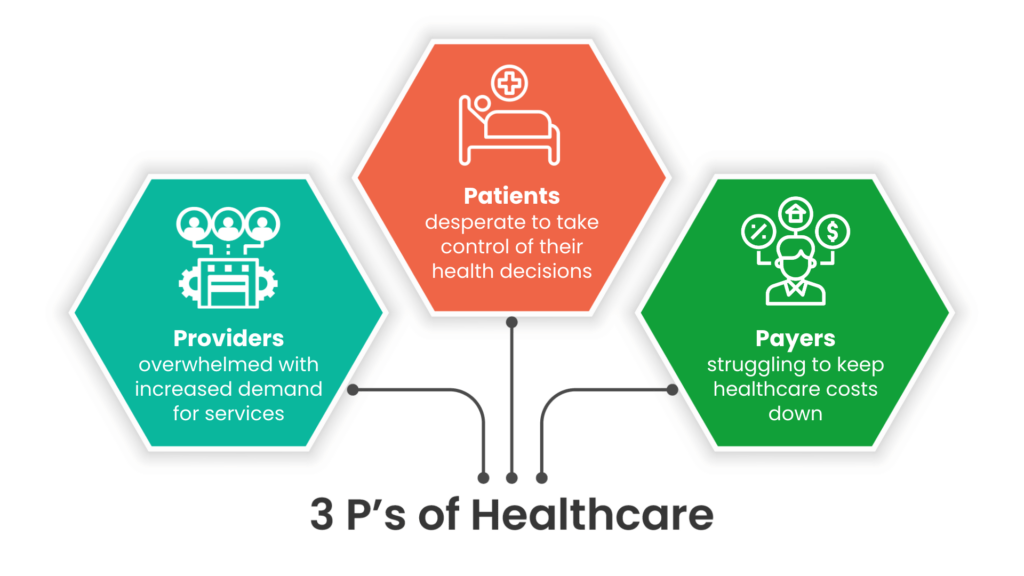
Advanced ecosystems exist across industries, including technological disruptors and incumbents deriving value from these ecosystems.
Let me explain this by using Disney Ecosystem as an example.
Its robust ecosystem allows each component to reinforce the other. It has had many milestones, including its first movie in 1937, its first television series in 1954, and its streaming service Disney+ in 2019. Throughout this journey, its theme parks and marketed products, including games and apparel, reinforce the brands of characters allowing all the stakeholders (audiences and visitors) to get an in-person experience.
The complete ecosystem has content, marketing, and underlying analytics that deliver the best experience and customer retention rates.
The maternal mortality rate in the US is on the rise. A technology ecosystem like Mahmee is addressing this problem. This EHR system links the patient records of both mother and baby. It brings all aspects of care, pediatrics, maternal, and wellness services together in one platform.
The system includes various stakeholders who are trained professionals looking for complications specific to new mothers. For example, if they caught septic post-birth from breastfeeding etc. It also helps prevent postpartum depression from developing into psychosis in multiple patients. The system can respond to the needs of a vulnerable patient set.
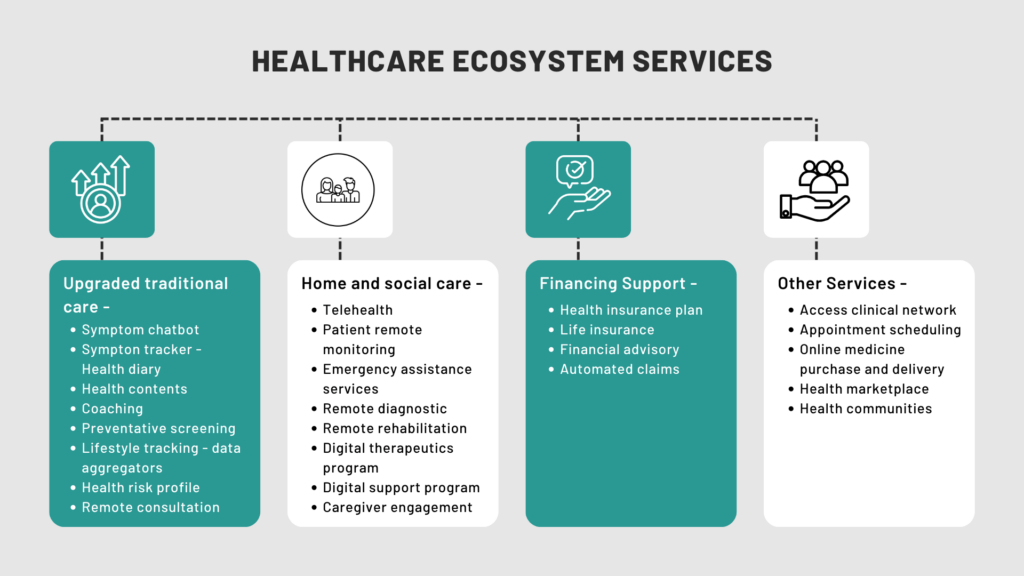
The healthcare ecosystem is the future! These systems revolve around the consumer (Patient). The ecosystem comprises of following services –
Improved Traditional Care
The services focus on preventing lifestyle-related diseases. The customer is involved in self-care routines through wellness-relevant content, health risk measurements, and health data tracking systems.
Home and Social Care
This includes services that ensure care, such as remote health monitoring and active patient engagement through networking portals.
Financial Support
This includes operations and financial infrastructure supporting industry care events, including payment and financing solutions.
Other Services
This includes services enabling the access and usage of care or other supporting systems.
The future-driven healthcare ecosystem looks at the needs of different patient populations and their relevant care journeys. The consumer-centric nature of the ecosystem is increasing the number of touchpoints with a significant goal of modifying patient behavior and ultimately improving outcomes.
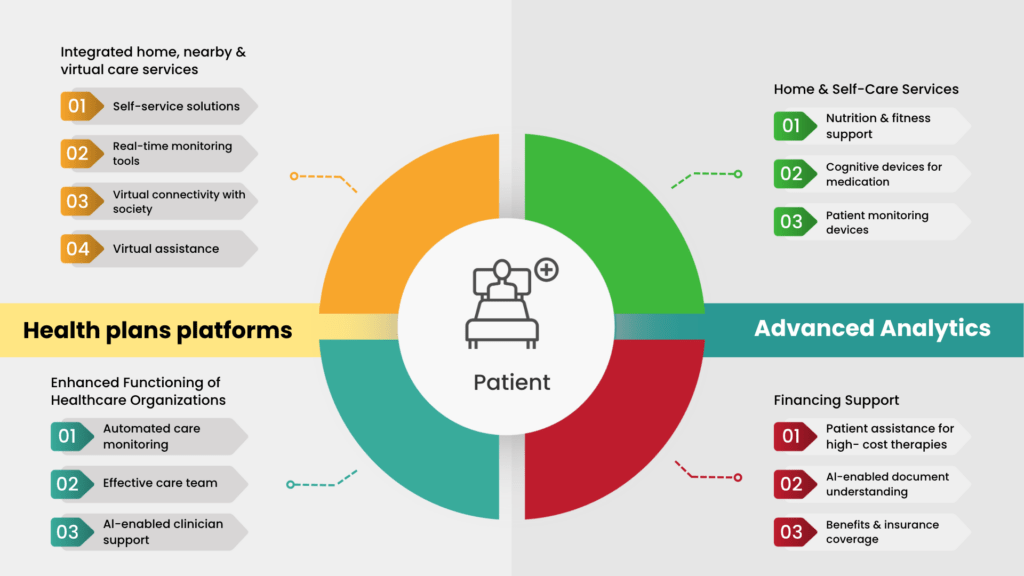
On one end of the spectrum, the ecosystem addresses the needs of healthy patients with less consistent medical complications but have personal health goals. These patients will experience an utterly digitized ecosystem where the patient data and insights are utilized in a highly personalized and meaningful way – for example, by using wearables to track health-related parameters in real-time.
On the other end, the ecosystem addresses the needs of patients who have various chronic conditions. Medicare and Medicaid drive this for the eligible population. It needs coordination between providers and services delivered virtually and in-person or near home to maintain the end-to-end experience. Technology components enhance the in-person experience and support the provider’s team. (Informal caregivers, often children of elderly patients)
Healthcare startups are formulating solutions around senior care. Read our case study to understand how we helped create an AI-enabled voice assistant solution for the elderly.
Although the patient segments help organize the care journeys and how ecosystems are required to support them, the journey considers the specific needs of every patient.
Layers of the Healthcare ecosystem
Architecture Layer
It comprises effective data capture, curation, management, storage, and interoperability to create a common data set upon which the ecosystem operates. It needs data liquidity and the ability to access, ingest and manipulate standardized data sets.
It helps in enabling coordinated care while accelerating innovation. The Open APIs are built for liquid data, provide access to patient records, support electronic data exchange for care transitions, and simplify the integration of new data sets, including claims, clinical, pharmacy, financial, and socially distributed data.
For example, Medicare-participating hospitals or care facilities can automatically send HIPPA-compliant electronic notifications to relevant stakeholders whenever the patient’s status is updated.
Intelligence Layer
The intelligence layer is interconnected with the first layer. It converts the data elements to meaningful, actionable insights.
For conversion, the system requires advanced analytics, which includes machine learning, natural language processing, artificial intelligence, and big data analytics. This tech cloud is crucial for gaining actionable insights to guide stakeholders across the ecosystem.
It helps stakeholders to use personalized predictive and prescriptive insights to manage population health effectively. Various use cases involve cancer diagnosis using ML, AI-based remote health monitoring, and pharmaceutical companies developing several AI-enabled therapies.
Engagement Layer
The first two layers enable this layer! It helps effectively curate an end-to-end experience for suppliers who provide patient services. This layer requires shared digital platforms, compelling customer experiences, and upgraded payment models.
Here the end users interact with services supported by underlying data sets from the architecture layer and insights from the intelligence layer. The engagement layer needs a digital platform that the end users can access through one principal channel. The services may include appointment scheduling, online consultation, transportation assistance, daily health monitoring, and financial consulting.
This evolved ecosystem is all about major changes in industry standards and behaviors. For example, provider practice changes include:
- Informed care decisions.
- Leveraging innovative care delivery models.
- Working across a care team distributed locations.
- Capturing data from all relevant healthcare facilities and sources.
The innovative payment models further align the patients, providers, and payers’ needs and behaviors.
What should healthcare services and technology players have to do to play a significant role in the ecosystem?
Since they vary widely in services and offerings, they vary across functions (providing services, data analytics, consulting, and software and platforms) and topical domains (payment integrity, revenue cycle management, and care management).
Players need to create frictionless markets for healthcare products and services. That is, they will be directly associated with ecosystem layers –
- At the architecture layer, they will provide data collection, transfer and management competencies, and polishing domain critical functionalities.
- At the Intelligence layer, they must specialize in payment integrity, revenue cycle management, population health, and clinical decision support.
- At the engagement layer, they should be capable enough to implement patient networking, provider networking, patient-provider engagement portals, care, and disease management platforms, utilization management, and provider enablement through digital products.
They must act as a single point to simplify critical operations within the ecosystem. Therefore, they need to identify situations to deploy these capabilities.
Companies work on solutions together within or across multiple sectors that may become an opportunity to build beyond the healthcare ecosystem. This action requires technical flexibility and APIs that can smoothly work between all three-component layers of the ecosystem.
Some of the players should also be specific when it comes to population, chronic diseases, or any other tech-specific use case. They should be capable enough to design and implement sub-ecosystems in such scenarios.
Conclusion
Ecosystems can act as a powerful force in reshaping and disrupting industries. The healthcare ecosystem has tremendous potential to do so and could lead to improved health outcomes and affordability by delivering a personalized, intuitive, and integrated patient experience. In addition, providers can enhance productivity and engage with a broad set of healthcare facilities.




